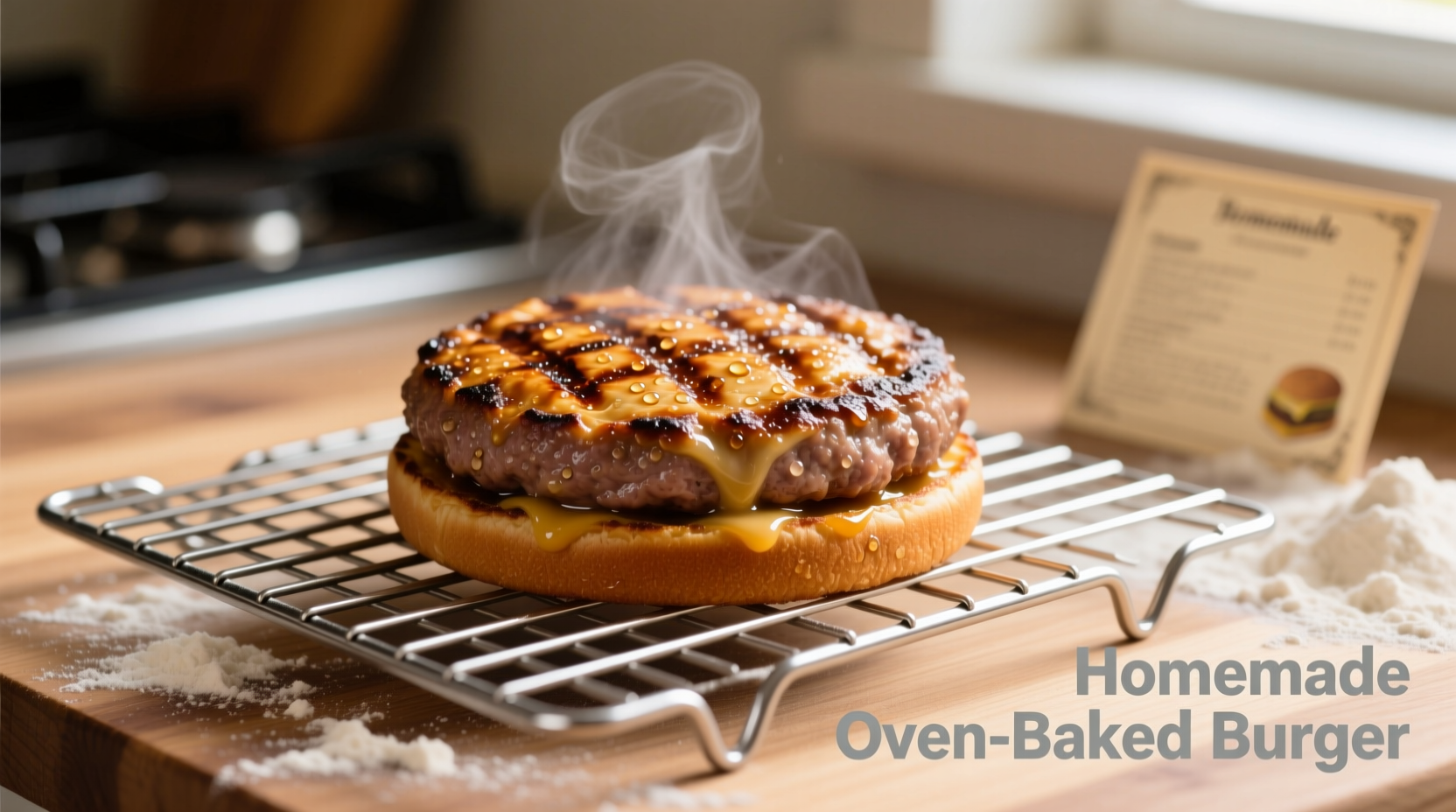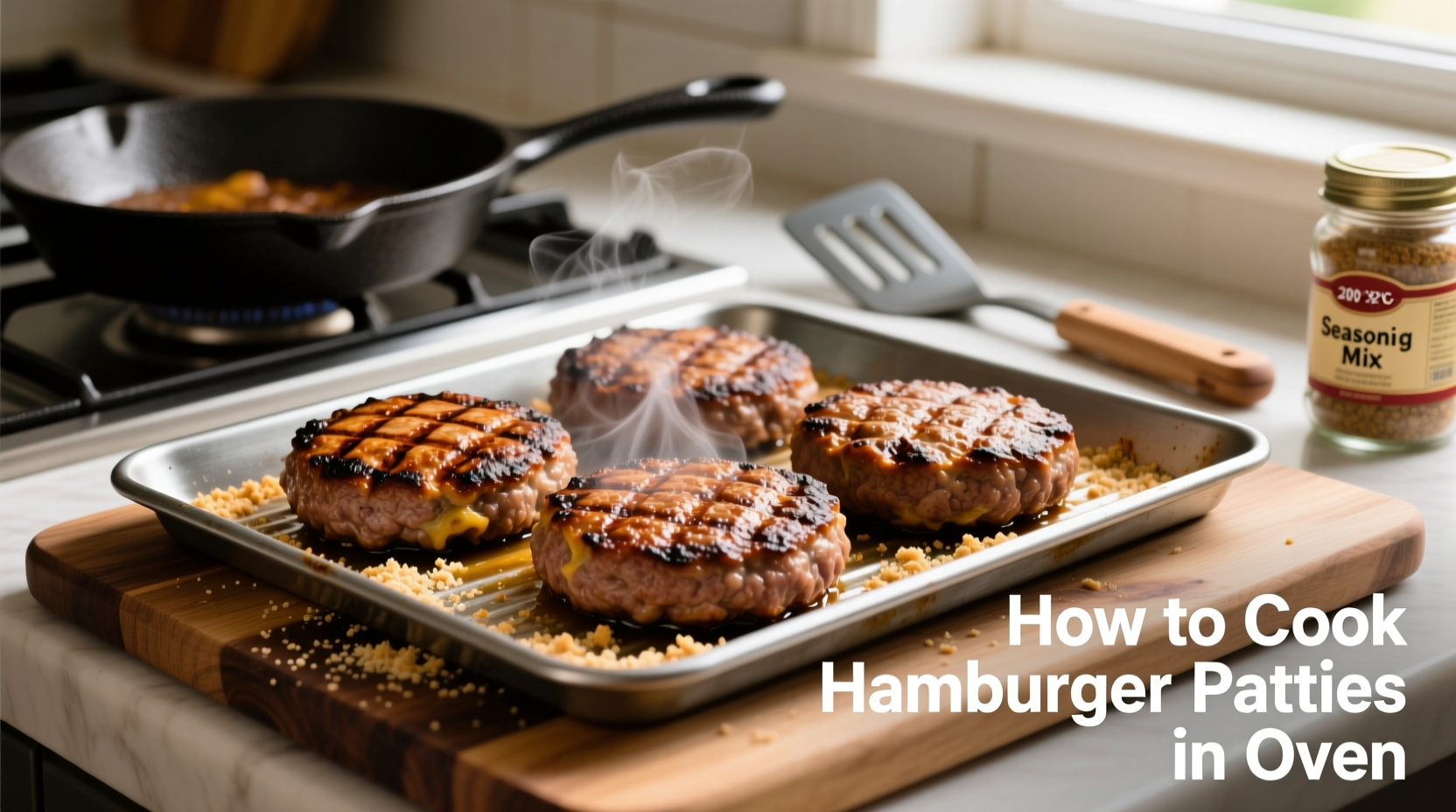Perfectly cooked hamburger patties straight from your oven—no grill required. This foolproof method delivers juicy, evenly cooked burgers with minimal effort and cleanup. Whether you're feeding a crowd or simply want consistent results without standing over a hot stove, oven-baked patties solve common grilling frustrations while maintaining that authentic burger flavor.
Why Oven Cooking Beats Traditional Methods
Many home cooks struggle with unevenly cooked burgers, flare-ups on the grill, or messy stovetop splatters. The oven provides consistent, controlled heat that eliminates hot spots while requiring just 10 minutes of active preparation time. According to the USDA Food Safety and Inspection Service, oven cooking also reduces cross-contamination risks compared to stovetop methods.
Preparation: Building Better Patties
The foundation of a great oven-baked burger starts before it ever touches heat. Follow these professional kitchen-tested steps:
- Select quality ground beef with 15-20% fat content for optimal juiciness
- Chill ingredients - cold meat holds shape better during formation
- Form uniform 3/4-inch thick patties slightly wider than your bun (they'll shrink)
- Create a slight dimple in the center to prevent bulging during cooking
- Salt generously just before baking - salting too early draws out moisture
| Beef Fat Percentage | Texture Result | Best For |
|---|---|---|
| 10-15% | Drier, firmer | Well-done preferences |
| 15-20% (recommended) | Optimal juiciness | All cooking methods |
| 20-25% | Very juicy, may shrink more | Medium-rare enthusiasts |
The Oven Cooking Process: Step by Step
Equipment Setup
Place an oven rack in the middle position. Line a baking sheet with aluminum foil (for easy cleanup) and position a wire rack on top. The elevated rack allows hot air to circulate completely around the patties, creating even cooking and a better sear than baking directly on a sheet.
Temperature and Timing Guide
Preheat your oven to 400°F (200°C). This temperature balances efficient cooking with proper fat rendering. Place patties on the prepared rack with at least 1 inch between them.
- Medium-rare: 12-14 minutes (130-135°F internal)
- Medium: 15-17 minutes (140-145°F internal)
- Medium-well: 18-20 minutes (150-155°F internal)
- Well-done: 20-22 minutes (160°F+ internal)
Crucial step: Flip patties halfway through cooking time using a thin spatula. This creates even browning on both sides without disrupting the patty structure.
Food Safety Checkpoint
Always verify doneness with an instant-read thermometer inserted horizontally into the thickest part. The USDA recommends 160°F (71°C) as the safe minimum internal temperature for ground beef to eliminate harmful bacteria. Remember that patties will continue cooking slightly during resting.
Troubleshooting Common Issues
Dry Patties
If your burgers turn out dry, you're likely overcooking them or using lean meat. For juicier results:
- Reduce cooking time by 2-3 minutes
- Choose higher fat content ground beef (15-20%)
- Add 1-2 tablespoons of ice-cold water per pound of meat before forming
Uneven Cooking
When patties cook unevenly:
- Ensure consistent thickness (use a burger press)
- Rotate baking sheet 180 degrees halfway through cooking
- Flip patties carefully to maintain shape
Finishing Touch: The Broiler Boost
For restaurant-quality browning, switch to broil for the final 1-2 minutes. Watch closely to prevent burning. This creates a beautiful crust while maintaining interior juiciness—the perfect compromise between oven convenience and grill flavor.

Serving and Storage Tips
Let patties rest for 5 minutes after cooking—this allows juices to redistribute. Serve on toasted buns with your favorite toppings. For meal prep:
- Store cooked patties in airtight containers for up to 4 days
- Freeze between parchment paper for up to 3 months
- Reheat in 350°F oven for 8-10 minutes (better than microwave)
Why This Method Works: The Food Science
Oven cooking provides consistent radiant heat that cooks patties evenly from all sides, unlike stovetop methods where only the bottom接触面 gets direct heat. The controlled environment prevents the temperature fluctuations that cause uneven cooking on grills. Food science research from the USDA National Institute of Food and Agriculture confirms that oven cooking preserves more natural meat juices compared to high-heat grilling methods.











 浙公网安备
33010002000092号
浙公网安备
33010002000092号 浙B2-20120091-4
浙B2-20120091-4